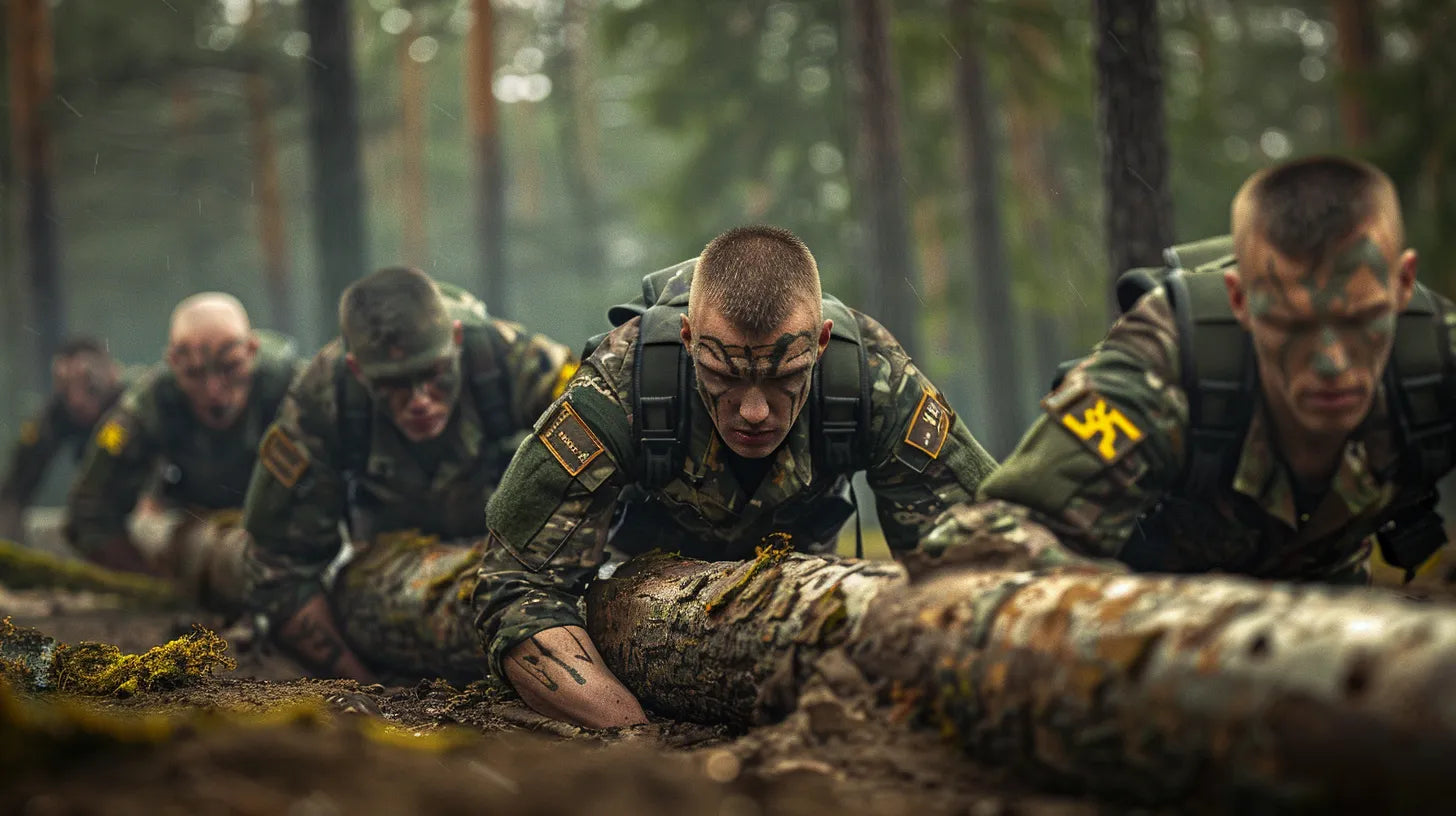
Military Training: Building Strength and Endurance Like the Swedish Armed Forces
Introduction to Military Training
Military training is known for its intensity, discipline, and effectiveness in building a strong, resilient body. The Swedish Armed Forces, or [[Försvarsmakten]], are no exception. Their training regimen is designed to prepare soldiers for the physical and mental demands of military service. However, you don't need to enlist to benefit from these proven techniques. By incorporating elements of military training into your own fitness routine, you can achieve impressive gains in strength, endurance, and overall physical performance.
The Pillars of Military Fitness
Military fitness training is built on a foundation of functional movements, cardiovascular endurance, and mental toughness. Some key components include:
- Bodyweight exercises: Push-ups, pull-ups, sit-ups, and squats build strength and muscle endurance without the need for equipment.
- Running: Long-distance runs and sprints improve cardiovascular health and stamina.
- Ruck marches: Carrying a weighted backpack over varied terrain builds strength, endurance, and mental resilience.
- Obstacle courses: Navigating challenging obstacles develops agility, coordination, and problem-solving skills.
By incorporating these elements into your training, you can build a well-rounded fitness base that translates to improved performance in any physical activity.
Bodyweight Training Basics
Bodyweight exercises are a staple of military training because they require minimal equipment and can be performed anywhere. To get started, focus on mastering these basic movements:
- Push-ups: Work your chest, shoulders, and triceps while engaging your core for stability.
- Pull-ups: Build upper body strength, particularly in your back and biceps.
- Sit-ups: Target your abdominal muscles for a stronger core.
- Squats: Develop lower body strength in your legs and glutes.
Begin with a manageable number of repetitions and gradually increase as your strength improves. Aim to perform multiple sets throughout the day, just like soldiers do during their training.
Endurance Training Techniques
Cardiovascular endurance is crucial for military readiness, and it's equally important for overall health and fitness. Incorporate these training techniques to boost your endurance:
- Long-distance running: Start with a comfortable distance and gradually increase your mileage over time. Aim for a steady pace that you can maintain for an extended period.
- Interval training: Alternate between high-intensity bursts of activity and periods of rest or low-intensity exercise. This could include sprints, hill climbs, or bodyweight exercises performed at maximum effort.
- Ruck marches: Load a backpack with weight (start light and gradually increase) and walk or hike over varied terrain. This builds endurance while strengthening your legs, core, and upper body.
Remember to listen to your body and allow for adequate rest and recovery between endurance training sessions.
The Mental Game
Military training isn't just about physical strength and endurance; it also requires mental toughness and resilience. To develop a stronger mindset:
- Embrace discomfort: Push yourself outside your comfort zone and learn to tolerate physical and mental discomfort. This could mean running in unfavorable weather, taking on a challenging obstacle course, or pushing through fatigue during a workout.
- Set goals: Establish clear, achievable goals for your training and work consistently towards them. Celebrate your progress and use setbacks as opportunities to learn and grow.
- Visualize success: Use mental imagery to picture yourself succeeding in your training and overcoming obstacles. This can help build confidence and mental resilience.
By training your mind alongside your body, you'll be better equipped to handle the challenges of military-style training and any other physical pursuits you undertake.
Gear Up Like a Soldier
While you don't need specialized equipment to train like the Swedish Armed Forces, investing in quality gear can enhance your performance and safety. Consider:
- Supportive shoes: Look for running shoes or cross-trainers with good arch support and cushioning.
- Moisture-wicking clothing: Choose breathable fabrics that wick sweat away from your skin to keep you cool and comfortable.
- Hydration system: Use a water bottle or hydration pack to stay properly hydrated during long training sessions.
- Weighted vest or backpack: For an added challenge, incorporate a weighted vest or backpack into your bodyweight or endurance training.
With the right gear and a commitment to consistent, challenging training, you'll be well on your way to building military-grade strength and endurance.
Training like the Swedish Armed Forces is a surefire way to take your fitness to the next level. By embracing the principles of military training - including functional movements, endurance, and mental resilience - you'll forge a body and mind that are ready for anything. So gear up, soldier, and charge full speed ahead on your path to peak physical performance. Your mission is clear, now it's time to execute.









